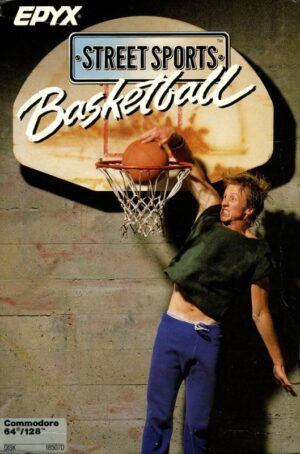Retro Replay Review
Gameplay
Crossfire takes the fundamental concept of line-drawing territory capture found in classic arcade titles like Cruising, then expands it with a fresh layer of tactical depth and pacing. As you guide your avatar around the playfield, each completed loop or segment you outline converts that area into your control zone—while leaving you vulnerable to roaming “chasers” intent on ending your run. Unlike grid-locked predecessors, Crossfire’s arenas boast dynamic, organic shapes, demanding both precision and foresight as you snatch territory.
(HEY YOU!! We hope you enjoy! We try not to run ads. So basically, this is a very expensive hobby running this site. Please consider joining us for updates, forums, and more. Network w/ us to make some cash or friends while retro gaming, and you can win some free retro games for posting. Okay, carry on 👍)
One of Crossfire’s most compelling mechanics is its “cut” system. By severing the unclaimed lines at key junctures, you can momentarily block pursuing adversaries or funnel them into traps of your own making. However, this knife-edge strategy carries risk: misjudge the geometry, and you may inadvertently close off your escape route, spelling an abrupt end to your progress. It’s a tense interplay of risk and reward that keeps every second of gameplay brimming with excitement.
To maintain momentum, Crossfire introduces a varied cast of enemy types, each with distinct behaviors. Some gliders cling to the open boundaries, while others home in on your most recent trail segment. Power-ups sprinkled throughout the stages—ranging from speed boosts to temporary invincibility—add another tactical layer, encouraging you to balance territory expansion with opportunistic collection. This blend of strategic planning and split-second reflexes makes each level feel vibrantly alive.
Graphics
Visually, Crossfire is a modern homage to pixel-era minimalism, marrying crisp vector lines with vibrant neon color schemes. The playfields are outlined in stark, glowing hues that contrast sharply against dusky backgrounds, ensuring every segment you draw stands out with perfect clarity. This aesthetic choice not only invokes nostalgia but also serves practical purpose, helping you track your progress and spot threats at a glance.
As you clear successive arenas, the patterns evolve from simple loops to elaborate fractal-like designs that rotate, scale, or even pulsate in time with the game’s upbeat soundtrack. These shifting canvases keep your eyes engaged and your spatial awareness challenged, raising the skill ceiling as you push for complete clearance. Subtle particle effects accompany each capture, sprinkling the edges of newly-claimed sections with a burst of light that rewards you visually for your precision.
Crossfire also takes full advantage of modern display resolutions. Anti-aliasing ensures smooth curvature on all lines, while bloom filters lend a gentle glow to active zones. Whether you’re playing on a handheld device or a widescreen monitor, the game adapts its color palette dynamically, preserving high contrast and readability even in darker room settings. The result is a polished, immersive look that feels every bit as sharp as it is functional.
Story
At its core, Crossfire is an arcade-style experience with minimal narrative trappings, focusing instead on pure, distilled gameplay. That said, a light sci-fi veneer frames your campaign: you play as an interstellar surveyor charting unclaimed sectors of a rogue digital galaxy. Each arena represents a binary star system overrun by hostile AIs, and by carving out territory, you restore order and pave the way for future colonists.
Between rounds, brief visual logs provide context for your mission—fleeting flashes of corrupted star charts, intercepted AI transmissions, and the ever-looming threat of total lock-down by the rogue central core. These snippets of lore aren’t mandatory to enjoy Crossfire, but they add a rewarding sense of progression as you unlock deeper regions and witness the story’s resolution in small vignettes.
While there’s no dialogue-driven cutscene extravaganza, the game’s seamless blend of gameplay and narrative beats keeps you invested. Reclaiming each level feels like a tangible victory against a silent, digital adversary. By the final sector, you’ll have mapped and liberated a sprawling cosmos of lines, transforming a once-chaotic frontier into a radiant testament to your skill.
Overall Experience
Crossfire strikes a thoughtful balance between classic arcade simplicity and modern design sensibilities. Its addictive loop of drawing, evading, and capturing territory hooks you instantly, while escalating challenges and enemy archetypes ensure that the experience never grows stale. Quick sessions are perfect for a coffee-break blast of adrenaline, while marathon runs will satisfy those seeking to master every nuance.
The audio-visual presentation complements the core gameplay beautifully, from the neon-drenched aesthetic and fluid animations to the pulsing electronic soundtrack that ratchets tension to a fever pitch. Little touches—like dynamic difficulty adjustments and optional challenge modes—cater to both newcomers and hardcore enthusiasts, making Crossfire a versatile addition to any gaming library.
For players who appreciate straightforward yet deep mechanics, Crossfire offers a compelling package. It takes the age-old territory-claiming formula, refines it with innovative twists, and wraps it in a sleek, responsive interface. Whether you’re chasing high scores, unlocking secret stages, or simply enjoying the visceral thrill of cornering those relentless chasers, Crossfire delivers an arcade gem that’s as engaging today as those classics that inspired it.
 Retro Replay Retro Replay gaming reviews, news, emulation, geek stuff and more!
Retro Replay Retro Replay gaming reviews, news, emulation, geek stuff and more!









Reviews
There are no reviews yet.